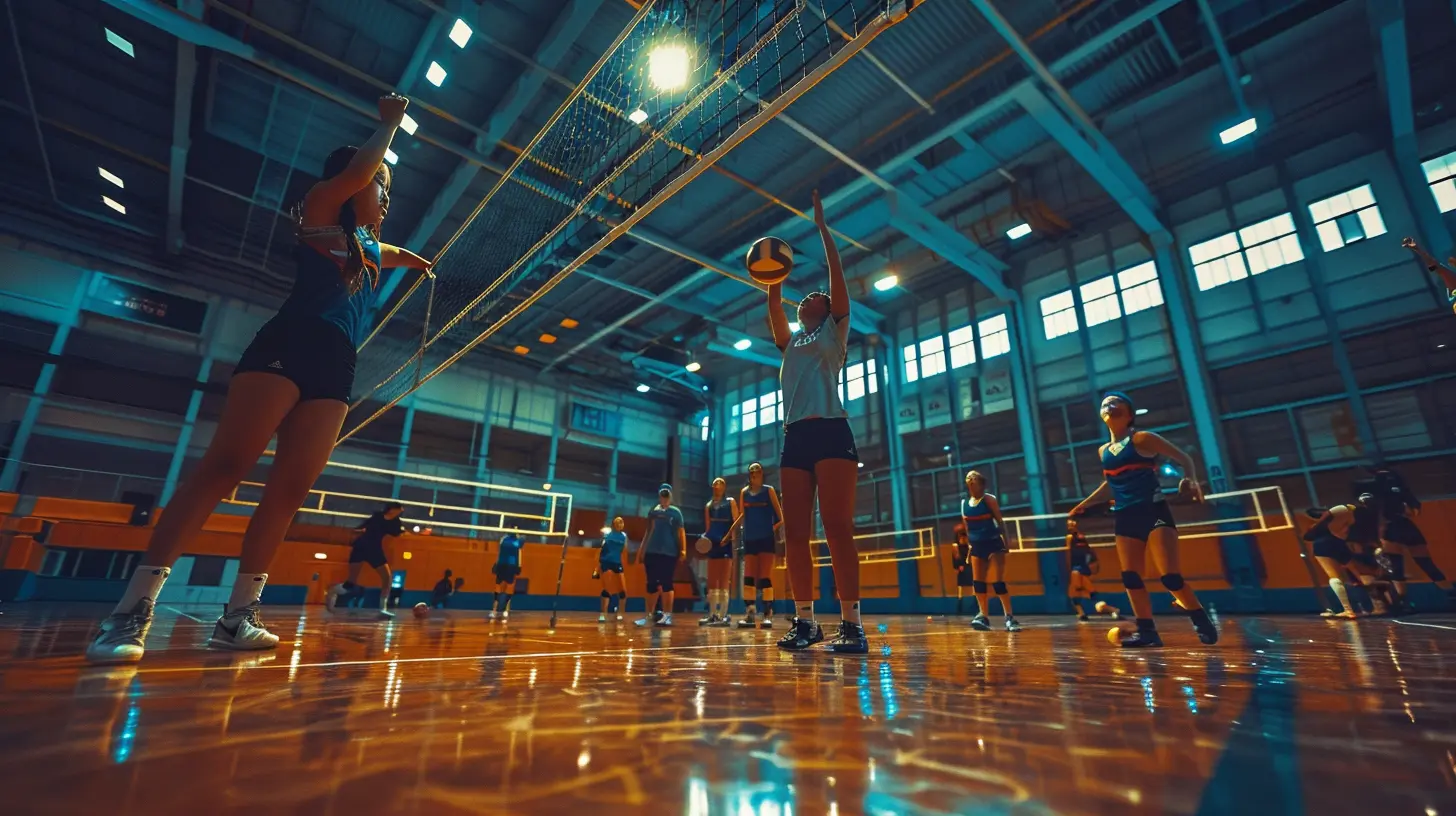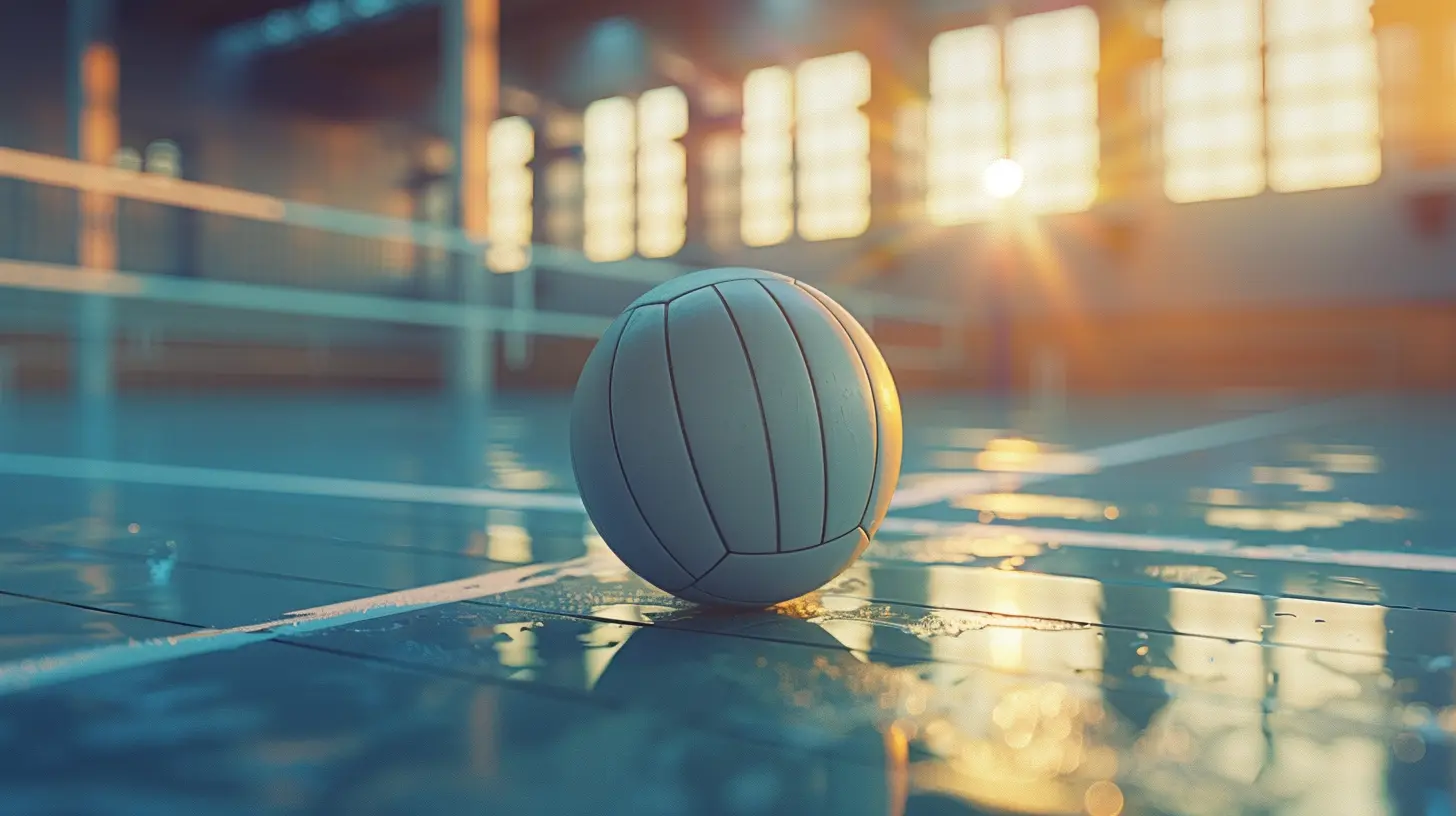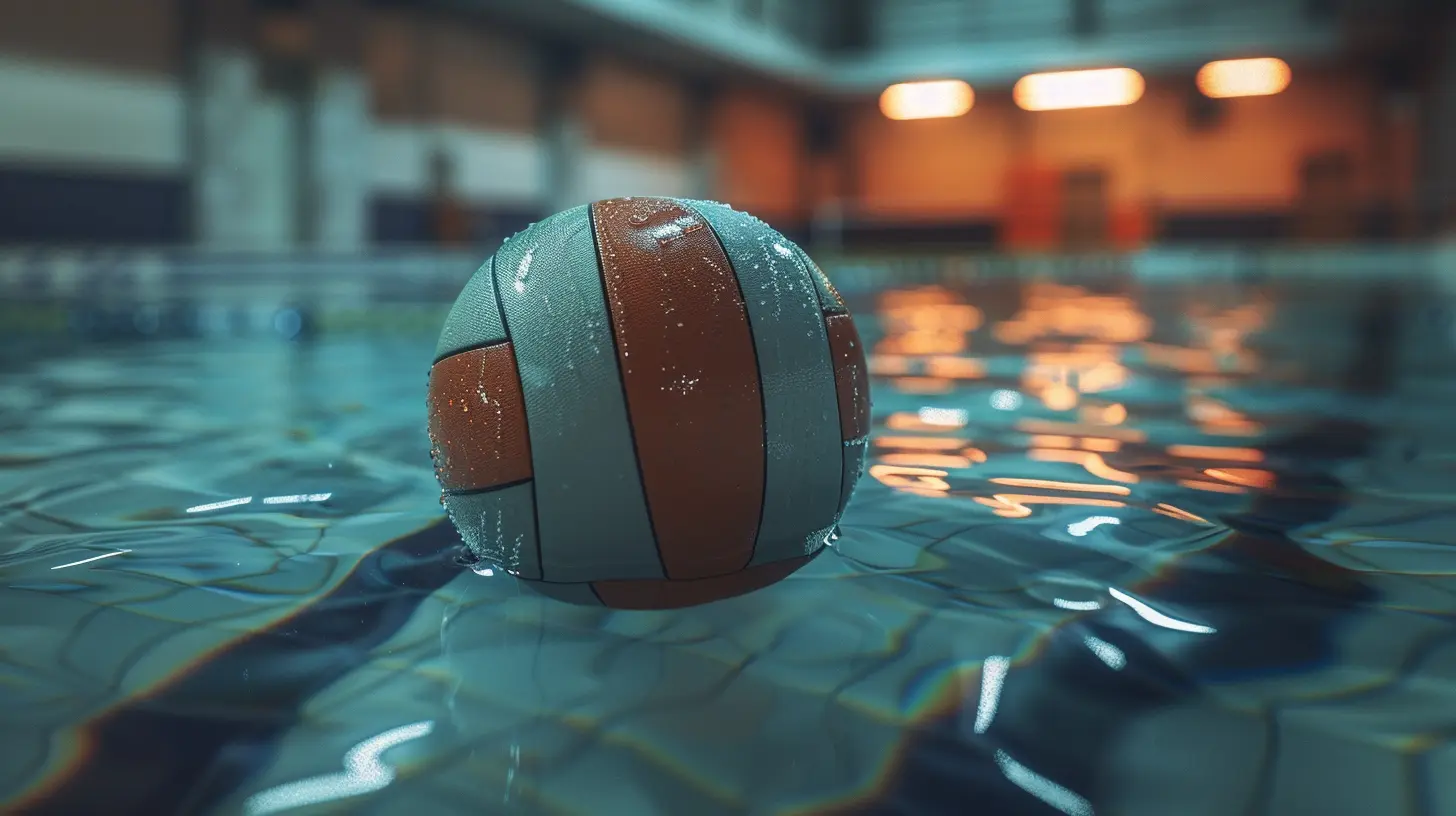How to Choose the Right Volleyball for Indoor and Beach Games
18 January 2025
Volleyball is one of those sports that you can play anywhere — from the sand on a beach to the hardwood of an indoor court. But before you spike, dive, or serve, there's one thing you need to get right: the volleyball itself. Picking the right volleyball for your game isn't as easy as grabbing the first one you see. Indoor volleyball and beach volleyball require different types of balls, and if you don’t choose the right one, your game might suffer.
So, how do you choose the right volleyball for indoor and beach games? Let’s break it down step by step.

The Importance of Choosing the Right Volleyball
Before we dive into the nitty-gritty, let’s get one thing straight: the ball you choose plays a massive role in how well you play. Imagine trying to play basketball with a soccer ball. Sure, you can make it work, but it won’t feel right, and your performance will suffer. The same logic applies to volleyball.Different volleyballs are designed for different environments, and if you’re serious about your game (or even if you just want to have fun), you’ll want to make sure you're using the right ball for the right setting. It’s not just about the aesthetics — it's about the weight, material, grip, and even the ball’s air pressure. These factors can dramatically affect how the ball moves and how you interact with it.

Indoor Volleyball vs. Beach Volleyball: What's the Difference?
To pick the right volleyball, you first need to understand the core differences between indoor and beach volleyball. While the game’s basic rules might be similar, the environment and conditions are completely different, and so are the balls used.Indoor Volleyball
Indoor volleyball is typically played on a smooth, hard court inside a gym or sports facility. The conditions are controlled: there’s no wind, no sand, and no rain. This allows for a faster-paced game with more predictable ball movement.Beach Volleyball
Beach volleyball, on the other hand, is played outdoors on sand. The weather is unpredictable — there’s wind, humidity, and sometimes even the blazing sun to contend with. The sand slows down the game, and the ball needs to be able to handle these rougher conditions.Now that you get the basic differences between the two versions of the game, let’s take a closer look at how you can choose the perfect volleyball for each type.

How to Choose the Right Indoor Volleyball
Indoor volleyballs are designed with fast-paced, high-intensity games in mind. They're optimized for quick movements and powerful hits. Here’s what to look for when choosing an indoor volleyball:1. Material
Indoor volleyballs are typically made from leather or a synthetic leather material. The leather is soft to the touch but durable enough to withstand hours of high-impact play. Synthetic leather is often used in cheaper models and can still be a good option for beginners or casual players. However, higher-quality leather balls might be preferred for competitive games.You want a ball that feels smooth but has enough grip for controlled passes and serves. Leather balls tend to soften over time, giving you better control the more you use them.
2. Weight
Indoor volleyballs are relatively light, weighing between 260-280 grams. This weight allows players to execute fast spikes and serves that slice through the air with speed. The lighter weight also means the ball travels faster, making the game more dynamic.When you're holding the ball, it should feel light but balanced in your hand, ready to fly when you hit it.
3. Size
The standard size for an indoor volleyball is 65-67 centimeters in circumference. If you’re playing in a league or a tournament, this is the size you’ll want. Be sure to avoid balls that are outside this size range, as they could throw off your game.4. Air Pressure
Indoor volleyballs require a specific air pressure to perform well — typically between 0.30 and 0.325 kg/cm² (or 4.26 to 4.61 psi). Too much air, and the ball becomes hard and challenging to control. Too little air, and the ball feels sluggish and doesn’t respond well to hits.Always check the recommended air pressure for the ball you’re using and make adjustments as needed. It’s a little detail, but it makes a big difference in how the ball reacts.
5. Panels
Indoor volleyballs are usually made up of 18 panels, which are sewn together. These panels give the ball its shape and help with aerodynamics. The fewer the panels, the smoother the ball, which can make it harder to grip but also faster and more responsive in the air.
How to Choose the Right Beach Volleyball
Beach volleyballs are a whole different beast. They’re tougher, thicker, and designed to withstand the elements. Here’s what to look for when buying a beach volleyball:1. Material
Beach volleyballs are typically made from a thicker, more durable material than indoor volleyballs. This is because they need to withstand the harsh conditions of the beach — from the rough sand to the unpredictable weather.The outer layer is usually made of composite materials or a softer, more durable synthetic leather. You want a ball that can handle moisture, dirt, and rough surfaces without wearing out quickly. It should also be soft enough to play comfortably with your bare hands.
2. Weight
Beach volleyballs are slightly heavier than indoor balls, weighing around 260-280 grams. This extra weight helps the ball resist the wind and ensures it doesn’t get tossed around too much during outdoor play.However, the weight difference is subtle — you likely won’t notice it until you’ve played with both types of balls. The extra weight gives the ball a more stable feel in windy conditions, but it also means it doesn’t travel as fast as an indoor ball.
3. Size
Beach volleyballs are slightly larger than indoor volleyballs. The standard circumference for a beach volleyball is 66-68 centimeters. This larger size makes the ball easier to handle in sandy conditions, even though the sand can slow down your movements.Make sure you’re choosing a ball that fits this size range for authentic beach volleyball play. A ball that’s too small or too large will feel awkward and could affect your game.
4. Air Pressure
Beach volleyballs require less air pressure than indoor volleyballs. The typical range is 0.175 to 0.225 kg/cm² (or about 2.5 to 3.2 psi). This lower pressure gives the ball a softer feel and helps it float more in the air, which is important for beach games where the sand and wind can slow down the action.If you’ve ever played with an over-inflated beach volleyball, you know how painful it can be to bump or set. Keeping the air pressure on the lower side ensures a softer touch and makes the game more enjoyable.
5. Water-Resistant Features
Beach volleyballs are often water-resistant because they’re exposed to the elements. Whether it’s a dip in the ocean or just a rainy day, you don’t want your ball to get waterlogged. Look for balls that advertise water-resistant or moisture-wicking properties to ensure they hold up over time.Tips for Maintaining Your Volleyball
Now that you’ve chosen the right volleyball, you want to make sure it lasts. Here are some quick tips for maintaining your ball, whether it’s for indoor or beach use:1. Keep It Clean: Wipe your ball down with a damp cloth after each game, especially if you’ve been playing on the beach. Sand and dirt can wear down the ball’s surface over time.
2. Store It Properly: Don’t leave your volleyball out in extreme temperatures. Too much heat can cause the ball to expand, and cold can make it brittle. Store it in a cool, dry place.
3. Check the Air Pressure: Regularly check the air pressure and adjust it as needed. An under-inflated or over-inflated ball can make play less enjoyable and cause long-term damage to the ball.
4. Rotate Your Ball: If you play a lot, it’s a good idea to have multiple volleyballs and rotate them. This ensures each ball gets a break and lasts longer.
Final Thoughts
Choosing the right volleyball for indoor and beach games isn’t rocket science, but it does take some consideration. Remember, the key differences between indoor and beach volleyballs come down to material, size, weight, and air pressure. Indoor balls are faster and lighter, while beach volleyballs are bigger, more durable, and built to handle the elements.By understanding these differences and knowing what to look for, you’ll be able to pick the perfect volleyball for your game — whether you’re playing under the gym lights or in the sand with the sun on your back. So, next time you head out for a game, make sure you have the right ball in hand. Your game will thank you for it!
all images in this post were generated using AI tools
Category:
Sports EquipmentAuthor:

Preston Wilkins
Discussion
rate this article
19 comments
Beau McGrath
Choosing the right volleyball can truly enhance your game, whether on the sand or indoors. I appreciate this article's insights—it’s clear that the right ball makes all the difference in performance and enjoyment. Thank you for sharing such valuable tips for players at every level!
March 31, 2025 at 12:18 PM

Preston Wilkins
Thank you for your thoughtful comment! I'm glad you found the tips helpful for enhancing your game. Happy playing!
Veronica Mercado
In courts of sand and halls of cheer, The right volleyball draws near. Feel its weight, embrace its flight, A partner for day, a muse for night. From spikes to serves, let passion swell, Choose wisely, play fiercely—play well!
March 17, 2025 at 4:01 AM

Preston Wilkins
Thank you for such a poetic take on choosing the right volleyball! Your words beautifully capture the spirit of the game and the importance of selecting the perfect ball for both indoor and beach play.
Bailey Ross
Great insights! Choosing the right volleyball enhances performance—suitable types for both indoor and beach play make all the difference.
February 7, 2025 at 9:00 PM

Preston Wilkins
Thank you! I'm glad you found the insights helpful. Choosing the right volleyball truly is key to optimizing performance in both indoor and beach settings.
Yvonne McGovern
Choosing the right volleyball depends on your playing environment. Indoor balls are heavier for better control, while beach balls are lighter and more durable. Always consider your skill level and court conditions for optimal performance!
January 30, 2025 at 11:30 AM

Preston Wilkins
Great summary! Selecting the right volleyball indeed makes a significant difference in performance based on the environment and skill level. Thank you for sharing!
Lys McCool
Great article! Choosing the right volleyball can really enhance the game, whether it's spiking on the beach or setting up a perfect play indoors. I love how personal preferences and play style impact the decision. Happy playing, everyone!
January 27, 2025 at 7:18 PM

Preston Wilkins
Thank you for your feedback! I'm glad you found the article helpful. Enjoy your games!
Otis McGeehan
Great tips, really helpful guidance!
January 27, 2025 at 3:27 AM

Preston Wilkins
Thank you! I'm glad you found the tips helpful!
Alessia McAuley
Great insights on selecting the perfect volleyball! Understanding the differences truly enhances the game experience, whether indoors or on the beach. Keep shining!
January 26, 2025 at 9:02 PM

Preston Wilkins
Thank you for your kind words! I'm glad you found the insights helpful for enhancing your game experience. Happy playing!
Everett McQuade
Choosing the right volleyball is like dating—avoid the hard ones indoors, but embrace the soft ones for a beach fling!
January 26, 2025 at 3:20 AM

Preston Wilkins
Great analogy! Just like in dating, the right choice can make all the difference in your game.
Colt McElhinney
Great insights on volleyball selection! I'm curious—how do factors like ball weight and material impact play differently on indoor courts versus sandy beaches? It’d be interesting to hear more about these nuances in performance!
January 24, 2025 at 9:11 PM

Preston Wilkins
Thank you for your comment! Ball weight and material significantly affect performance: indoor volleyballs are typically heavier and designed for durability on hard surfaces, enhancing control and power. In contrast, beach volleyballs are lighter and softer, allowing for better handling in windy conditions and on sand. These differences can influence your overall play strategy in each environment!
Zarev Hurst
Choosing the right volleyball can elevate your game! Whether on the sand or indoors, the perfect ball fuels passion, teamwork, and skill. Embrace the game and make every hit count!
January 24, 2025 at 12:23 PM

Preston Wilkins
Absolutely! The right volleyball truly enhances performance and enjoyment, whether you’re playing indoors or on the beach. Thanks for highlighting its importance!
Nicole McKibben
Choosing the right volleyball enhances your game and boosts confidence! Embrace the journey, stay passionate, and elevate your skills on both sand and court!
January 24, 2025 at 4:05 AM

Preston Wilkins
Absolutely! The right volleyball is key to improving your game and boosting confidence. Embrace the process and enjoy both indoor and beach play!
Rhea Alvarez
Great insights on selecting the perfect volleyball! Understanding the differences between indoor and beach options is crucial for enhancing performance. The tips on material and size are particularly helpful for beginners. This guide will definitely assist players in making informed choices for their games!
January 23, 2025 at 4:08 AM

Preston Wilkins
Thank you for your feedback! I'm glad you found the insights helpful for making informed choices in selecting the right volleyball. Happy playing!
Cassandra Cooper
Choosing the right volleyball is like picking the perfect dance partner: you need the right amount of bounce, a good grip, and no fear of sand! So let’s avoid those beach balls that float away and indoor balls that play hard to get! 🏐💃🕺
January 22, 2025 at 9:03 PM

Preston Wilkins
Absolutely! The right volleyball enhances your game—just like the perfect dance partner! Ensure you select one suited for your playing environment for the best experience. 🏐✨
Daisy Henson
Choosing the right volleyball is essential for an enjoyable experience, whether on the court or the sand. It’s great to see such helpful guidance in your article. Understanding the nuances between indoor and beach balls can truly enhance performance and foster a love for the game. Thank you!
January 20, 2025 at 7:20 PM

Preston Wilkins
Thank you for your thoughtful comment! I'm glad you found the guidance helpful—choosing the right volleyball can indeed make a big difference in enjoying the game. Happy playing!
Korian Morris
Interesting insights! How do different materials impact performance in various playing conditions? Curious to learn more!
January 20, 2025 at 12:39 PM

Preston Wilkins
Thank you! Different materials affect factors like grip, durability, and moisture resistance, crucial for performance in varying conditions. Indoor balls often use softer covers for better feel, while beach balls are designed to withstand sand and moisture. Happy to share more details!
Kenna Ramos
Choosing the right volleyball is like picking the perfect pizza topping – it can make or break your game! Whether you’re spiking on the sand or bouncing indoors, always remember: a great ball equals great fun! So, go for that sweet spot between bounce and durability. Let the games begin! 🏐✨
January 19, 2025 at 8:15 PM

Preston Wilkins
Absolutely! Just like pizza, the right volleyball enhances your experience—prioritize bounce and durability for the best game! Let’s play! 🏐✨
Vanya Sharpe
Great article! Choosing the right volleyball truly enhances the game. Your insights will help many players elevate their experience. Thank you!
January 19, 2025 at 1:27 PM

Preston Wilkins
Thank you for your kind words! I'm glad you found the insights helpful. Happy playing!
Rebecca McIlwain
Choosing the right volleyball is essential for performance and enjoyment. Consider factors like material, weight, and intended surface. Indoor balls are designed for control, while beach volleyballs are heavier and more durable. Make your choice based on your playing environment for an enhanced experience.
January 18, 2025 at 10:01 PM

Preston Wilkins
Absolutely! The right volleyball significantly impacts your game. Indoor and beach balls have unique features tailored for their surfaces, so choosing wisely enhances both performance and enjoyment.
Yolanda Palmer
Choosing the right volleyball is like picking a partner for a dance—find one that fits your style and you'll be spiking with joy on any court!
January 18, 2025 at 5:34 AM

Preston Wilkins
Absolutely! Just like a perfect dance partner, the right volleyball enhances your game and boosts your enjoyment. Choose wisely!
MORE POSTS

How to Use Off-the-Ball Movement to Set Up Scoring Chances
The Best Fitness Trackers for Runners and Athletes

How to Avoid Burnout in Young Athletes
Underdogs Who Became Icons: The Stories Behind the Legends

The Role of Intrinsic Motivation in Athletic Success

How to Choose the Right Weightlifting Belt for Your Workouts

Rivalry and Respect: The Magic of Sportsmanship in Competitive Sports

Offensive Fireworks: A Deep Dive into the Weekends High-Scoring Battle

MMA’s Most Intense Rivalries and Their Impact on the Sport

The Connection Between Mental Health and Athletic Performance

Grace Under Pressure: Athletes Who Define Sportsmanship in Tough Times

Beyond the Scoreboard: Stories of Honor and Respect in Sports